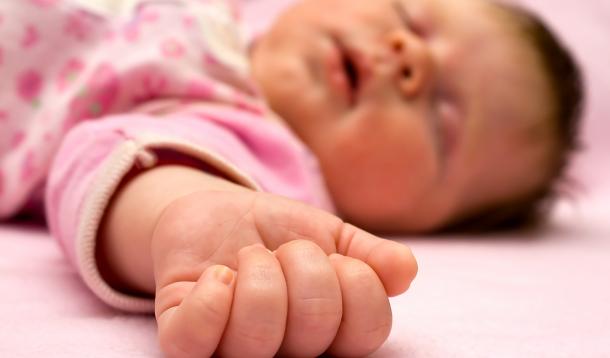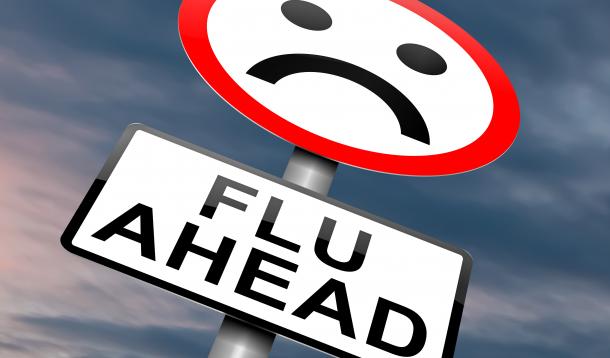
Our "Critter" (note: don’t encourage your four year-old to ‘name’ your baby!) is due any day now. Like us, if you are approaching your due date you are most likely busying yourself making the nursery pretty and welcoming – this is the fun part that you and your partner can get excited for. Most moms thrive in this excitement during the last few weeks of the nesting period. But don’t go crazy on the crib, as I am reminded of the importance of making sure the nursery is not just cute, but functional and safe. Sorry to be a downer.
Here are some things for the nursery area that require as much consideration as paint colour and wallpaper pattern:
Don’t go crazy on the crib.
There are many things to think about - where your baby sleeps, the sleeping position, temperature in the room, the kind of crib or bassinet and type of mattress are all important to consider. So many things to think about!
More than 50% of US infants are being placed to sleep with bedding that increases the risk of Sudden Infant Death Syndrome (SIDS).
On Dec 1, 2014 the American Academy of Pediatrics (AAP) and National Institute of Health in the United States published a release stating that more than 50% of US infants are being placed to sleep with bedding that increases the risk of Sudden Infant Death Syndrome (SIDS). SIDS is the unexplained death of a child in the first year of life, the stuff of nightmares. I have been lucky to never be involved in a case of SIDS, but I am aware of the devastating affect it has on a family.
What causes SIDS? Unfortunately, we don’t know. These babies have an unknown cause of death even after full investigation and autopsy. Many parents - myself included - fear it.
As the rate of SIDS dropped, there was a surge of new cases of child suffocation from blankets and bedding in the baby’s sleep space.
Almost 22 years ago, the AAP recommended that all babies be placed on their backs to sleep. This lead to a 50% reduced risk of SIDS, however, as the rate of SIDS dropped, there was a surge of new cases of child suffocation from blankets and bedding in the baby’s sleep space. What doesn’t help is the multitude of images that parents see in magazines and other media depicting infants sleeping on top of or under heavy blankets surrounded by bumpers and plush toys. So keep the sleeping area clean and uncluttered!
When is it Safe For A Child to Start Using a Pillow?
Here are some recommendations from me, as doctor and mom:
Where should baby sleep?
Both the Canadian Pediatric Society and American Academy of Pediatrics recommend babies sleep in a crib or bassinet in parents’ room for at least the first 6 months. The child should always be placed on his or her back. Sleeping in your room may decrease the risk of SIDS and allow for easier nighttime feeding - something every tired parent can be happy about!
Back to sleep
Babies should only sleep on their backs (have I said that yet?) It's really, really important. There should be no sleep-positioner or blankets underneath or around baby which could potentially cause suffocation. The best blanket is no blanket, just a tight fitted sheet around the mattress. Baby can be kept warm in appropriate sleeper clothing.
Firm, flat sleep surface
Air mattresses, couches, pillows, and waterbeds are unsafe sleep environments. If the surface is too soft, babies can roll and are at risk for being unable to breathe.
Nothing in the crib
Leave blankets, pillows, stuffed animals, and bumpers out of the crib.
Room temperature
Make sure the room is not too warm and that your child is not wearing too many layers. I suggest babies wear one layer more than parents in the same environment to keep them comfortable. A long sleeve onesie and a Sleep Sac is perfect in most environments.
Do not smoke
SIDS is more common in babies exposed to cigarette smoke. Do not smoke around your child and don’t smoke while pregnant.
Ensure your crib is safe
Make sure your crib or bassinet meets Health Canada’s safety standards. Be very leery of used cribs and bassinets as they won't meet current safety standards. May be best to avoid them entirely.
Bed sharing and co-sleeping with baby
Bed sharing can make breast-feeding easier on babies and moms. Many babies will sleep better when sharing the bed with parents. However, this is a risky practice as adult beds and bedding are not made with babies in mind and can increase the risk of SIDS and suffocation. A baby can become trapped between the mattress and the wall, can fall off the bed, or an adult can roll on top of the baby, suffocating it.
Similarly, sleeping with a baby in a chair or couch is risky as the baby may become lodged between the couch cushions, or fall. This is especially true if the parent or caregiver has been drinking alcohol or using drugs.
I know this all may sound limiting. When you are sleep deprived and trying to start breast-feeding off right you may feel inclined to co-sleep or sleep with your baby in a chair. PLEASE TRY NOT TO. It’s not worth the risk. The first couple of months are challenging for sure, but you will get through them and have a healthy sleeping baby before you know it!
Please keep your baby on his or her back, in a crib or bassinet, in your room with nothing in the crib for the first 6 months.
Curious how much sleep your baby needs? You can also follow Dr. Dina on her Facebook page for more information on pregnancy and children’s health.

It’s what's on every parent’s mind right now—colds and flu! With those pesky germs lurking in daycare centres, schools and even your workspace, it can sometimes seem like an uphill battle. It's winter and it is viral season, and anything less than a time machine trip back to July means there's no going back. As a physician, I can count on my office and emergency room being filled with kids and adults coughing, wiping their noses, and suffering with vomiting and diarrhea for at least the next three months or so. This is life in Canada during the fall and winter "ick" season, much to a parent (and doctor's!) chagrin.
Thankfully, there are some preventative measures you can take to avoid bringing these illnesses into your home.
Here are my expert tips for preventing pains, aches, sniffles, sneezes and worse this year:

I know you’ve heard it a million times, but washing your hands with soap and water—and doing it often—or using a sanitizing gel or spray really does decrease the risk of getting viral and bacterial infections. Ensure you wash for 20 seconds or more (as long as it takes to sing ‘Happy Birthday’ twice). Consider using a paper towel to turn off the faucet and open the bathroom door in public washrooms as these places are often germ and virus party towns. I wash my hands before I step in every exam room, again before I touch a patient, and once again as I’m leaving a room. All this washing makes my hands drier than I’d like, so I moisturize often to combat cracks and dryness, which are just another gateway for germs.

You'll want to make sure your nails are always clean, as serious bacteria and viruses such as H1N1, E. Coli, strep, coronavirus and more, often linger under these hard to reach spots. Besides soap and water and hand sanitizers, consider using a product like freshnails, an undernail hand sanitizer that targets and removes dirt, debris and germs from your undernails—an area most soaps and brushes do not reach. Using freshnails can lower the risk of common infections and help prevent colds, flu, sickness and illness by killing 99% of the bacteria under your nails—all without the need for water, soap or a sink. freshnails fits nicely in purses and pockets. Add freshnails to the stocking of anyone you think could not use a cold or flu this season. Basically, it's freshnails for everyone this year, because who wants to be sick for the season? Exactly no one, according to a quick count here.

Avoid touching your nose, mouth, and eyes whenever possible. This is how bacteria and viruses take hold—by entering your body through mucous membranes, the majority of which happen to be - surprise! - on your face. Let's say this: if it's a hole on your face, don't be touching it. Avoid rubbing or putting your hands on your face throughout the day and always wash your hands before eating since your hands will be in close proximity of your mouth nose and eyes. Again: If you're going to touch it, pick it, rub it, or caress it—wash first.

Viruses and bacteria can live on surfaces for hours or even days. That public keyboard, phone, doorknob, pen, and water cooler are likely covered in illness-causing germs. It's a gong-show of virus and bacteria anywhere a human hand has lingered during the winter season, because you can't count on everyone to be as diligent as you are at washing. Consider cleaning these surfaces often (and encourage others to do the same), or keep hand sanitizers close by and ready to use after you use public places. Antiseptic wipes are great to keep on hand in your office space, and can also be used to swipe headsets and keyboards you may borrow.

Getting your heart rate up every day (ideally for at least 30 min) can help stave off illness. Your heart will become stronger, and your immune system will be better able to fight infection if you are healthy and active. If you are already sick, follow this simple rule of thumb: if you are sick above the neck with sneezing and congestion, go ahead and exercise. If you have a high fever, cough or chills, get some rest and resume exercise when you are feeling better. Rest up to work out.

Over the years we've heard about many medicines and herbal remedies touted as preventive magic for colds and flu, including high dose vitamin C, Echinacea, and zinc to name a few. Most studies demonstrate mixed results in the prevention and treatment of common viruses but one treatment worth considering is honey. Limited evidence shows it can prevent infections and shorten the duration of illness, but please check with your doctor before trying medicines or herbal remedies, especially if you are taking other medication where drug interactions are possible.

The flu shot or mist are great defenses against the influenza virus. You cannot get the flu from the shot or spray, but mild fever, aches or a runny nose are common side effects. If you aren't too sure about getting the flu shot or mist, click here for some flu shot q&a or ask your doctor.
Prevention is key when staying healthy during the cold and flu season. Washing hands often, using freshnails, and keeping your home and work environments clean and sanitized can go a long way towards being able to enjoy your winter season. Who wants to spend two weeks in bed with the flu when they could be skating or sipping hot chocolate in a ski lodge hot tub?
Try some of these simple personal hygiene tricks to help keep you and your family healthy this cold and flu season and beyond!
 Your hands may look clean but even after washing, they’re still covered in germs. Now, thanks to freshnails, your hands can be 99.99% germ-free.
Your hands may look clean but even after washing, they’re still covered in germs. Now, thanks to freshnails, your hands can be 99.99% germ-free.
![]() Watch this short video to learn the proper way to wash germs and dirt off your hands.
Watch this short video to learn the proper way to wash germs and dirt off your hands.

This is proudly sponsored by our friends at freshnails™.
www.freshnails.com